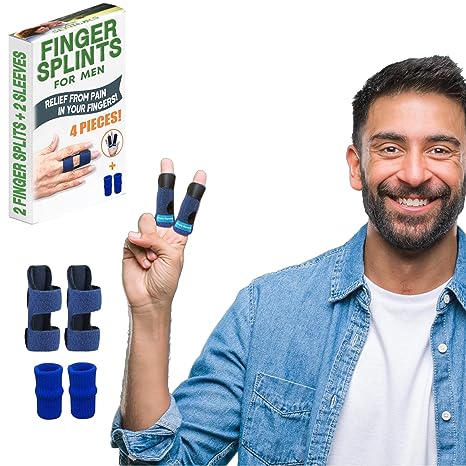Finger injuries can be both painful and limiting, affecting various aspects of daily life. To aid in the recovery process and provide support, finger splints are commonly used. These devices come in various shapes and sizes, each designed to address specific types of injuries. In this article, we will explore the different types of finger splints tailored for men.
1. Aluminum Splints:
– Description: Aluminum finger splints
are rigid and provide excellent support for fractures and severe sprains.
– Advantages: They are lightweight, durable, and customizable, allowing for a secure fit around the injured finger.
– Ideal Use: Recommended for fractures and injuries requiring rigid immobilization.
2. Buddy Strapping Splints:
– Description: Buddy strapping involves attaching an injured finger to an adjacent healthy one, providing support during the healing process.
– Advantages: This type of splint is simple, cost-effective, and suitable for mild to moderate injuries.
– Ideal Use: Effective for sprains, dislocations, and minor fractures.
3. Stack Splints:
– Description: Stack splints consist of multiple rings that can be stacked on top of each other to provide varying degrees of support.
– Advantages: Adjustable and versatile, allowing for customization based on the severity of the injury.
– Ideal Use: Suitable for a range of finger injuries, from mild sprains to fractures.
4. Frog Splints:
– Description: Resembling a frog’s splayed legs, these splints provide support to both sides of the injured finger.
– Advantages: Offers stability and protection while allowing some degree of movement.
– Ideal Use: Commonly used for ligament injuries, dislocations, and post-surgical support.
5. Mallet Finger Splints:
– Description: Specifically designed for mallet finger injuries, where the fingertip cannot be straightened.
– Advantages: Helps maintain the extended position required for proper healing.
– Ideal Use: Recommended for mallet finger injuries resulting from sports or accidents.
6. Neoprene Finger Sleeves:
– Description: These sleeves provide compression and support for the entire finger.
– Advantages: Comfortable, breathable, and suitable for mild to moderate injuries.
– Ideal Use: Beneficial for conditions like arthritis, mild sprains, and swelling.
Conclusion:
Choosing the right finger splint is crucial for effective rehabilitation. The type of splint depends on the nature and severity of the injury. Consulting with a healthcare professional is always recommended to ensure proper diagnosis and treatment. Whether it’s a rigid aluminum splint for a severe fracture or a neoprene finger sleeve for arthritis, the goal is to promote healing and restore optimal functionality to the injured finger.


